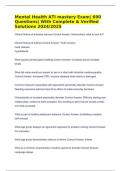Resume
Summary Explore the factors that can affect the pathways and the rate of photosynthesis in plants
- Cours
- Établissement
In this document, you will see an in-depth information on the factors that will affect a plant's photosynthesis. With chemical formulas and a Light Intensity Experiment on an Elodea plant. Please leave a review, it will be much appreciated. Be careful on copying this or you will be classed as p...
[Montrer plus]












